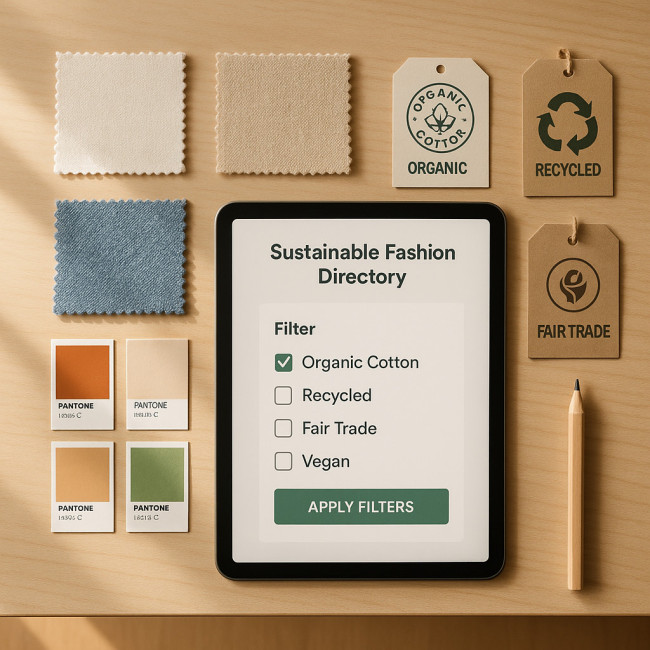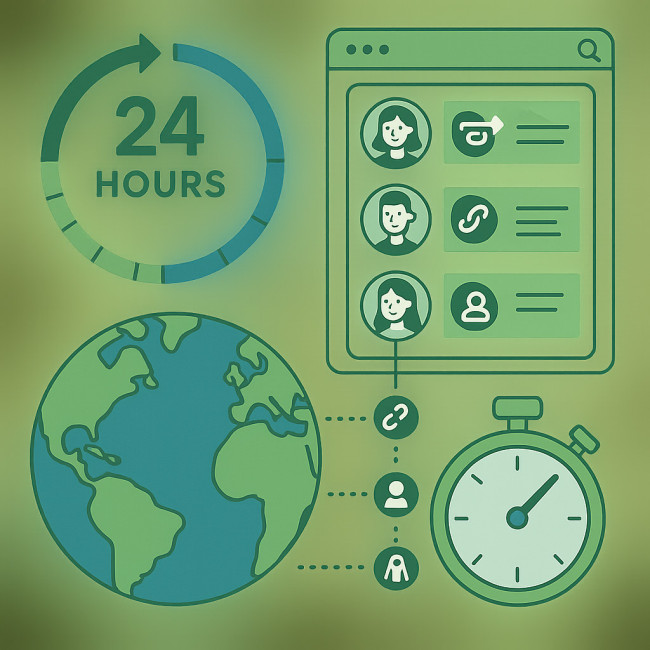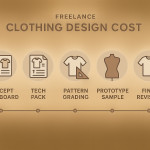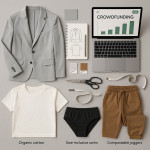Leveraging online directories to source sustainable clothing designers fast
Need an eco-driven fashion partner yesterday? Online directories make locating and onboarding sustainable clothing designers lightning-fast. This guide shows you which filters to use, what red flags to avoid, and how to move from search to signed brief in a single afternoon.
Why online directories accelerate sustainable sourcing
Traditional scouting—trade fairs, agent calls, endless email threads—steals precious weeks. Modern talent directories compress that timeline by putting sustainable clothing designers one click away from your brief. Here's why they win:
- Centralised data: Certifications, past collections, rates and lead times appear on one profile, eliminating back-and-forth.
- Instant filtering: Sort by eco-labels, location or minimum order quantity to see only designers who meet your impact goals.
- Verified reviews: Previous brand clients post testimonials that speed trust building.
- Direct messaging: Chat tools built into the listing avoid slow email chains.
Key filters that surface eco-minded talent in seconds

Most directories provide dozens of toggles. Focus on these to slice through noise and reach the right sustainable clothing designers fast. But note that interfaces differ across platforms: some hide advanced eco-data inside expandable accordions, while others surface it as colour-coded badges next to each profile thumbnail. Spend two minutes exploring the layout first, then stack just four or five high-impact filters—think GOTS certification, lead-time slider, region and budget range—so you avoid excluding promising innovators who operate under niche labels like OEKO-TEX STeP or cradle-to-cradle silver. A little front-end familiarity prevents misclicks that could push you back into time-draining manual searches.
Material certifications
Prioritise listings displaying GOTS, Fair Trade or bluesign labels. These badges show the designer's supply chain is already audited, saving you due-diligence time.
Production capacity
Check the “units per month” field. Small capsule lines need 30–150 units; larger drops may require factories or designer collectives that can scale. Profiles often include a small-batch maker checklist you can cross-reference.
Lead-time sliders
Directories with delivery-date filters let you weed out studios unable to hit a hard launch window. Pick “≤ 6 weeks” to reveal only agile designers.
Location & carbon metrics
Some platforms display estimated shipping emissions. Choose local or regional options to slash transport CO₂.
Speciality tags
Look for niches such as “upcycled denim” or “zero-waste pattern cutting”. These tags often lead to innovative collaborators and unique storytelling angles.
Step-by-step workflow: from search to signed brief
- Clarify must-haves. Write a quick spec: fibres, quantity, budget range, storytelling theme.
- Enter the directory. For fashion talent, many brands start on the dedicated clothing-designer directory.
- Apply critical filters. Certifications, lead time, geography and price brackets are your fastest eliminators.
- Shortlist three profiles. Use built-in comparison views or bookmark tools.
- Validate experience. Cross-check each candidate's social proof or read our in-depth guide on qualifying freelance clothing designers.
- Send a concise brief. Attach mood-boards, target retail price and launch date.
- Book a 15-minute call. Clarify sampling fees and intellectual property clauses.
- Issue a micro-contract. Cover deposit, timeline milestones and sustainability KPIs. Need a template? See onboarding clothing designers smoothly.
Directory vs traditional sourcing: time & cost comparison
| Stage | Traditional search | Directory workflow | Time saved |
|---|---|---|---|
| Initial list building | 4–5 days of outreach | 15 min filter search | ≈ 90 % |
| Credential checks | 1 week of emails | Badges auto-verified | ≈ 80 % |
| First call scheduling | 3–4 days | Built-in calendar | ≈ 70 % |
| Sample approval | Courier + manual payments | Integrated payment & tracking | ≈ 60 % |
| Contract signing | Offline PDF edits | E-signature widget | ≈ 50 % |
Red flags to avoid greenwashing
Directories simplify sourcing, but vigilance still matters. Watch for these warning signs:
- Self-declared “eco” claims without third-party certificates.
- Incomplete material breakdowns. If recycled content is “secret”, move on.
- Too-good price points. Rock-bottom quotes may hide labour shortcuts.
- Low response scores. Some platforms show reply rates. Anything under 70 % signals unreliable communication.
- Stock images only. Lack of studio or process photos can mask outsourced production.
Integrating designers smoothly after the match
Once you've picked a sustainable clothing designer, streamline collaboration using:
- AI-powered trend boards for faster concept alignment.
- Shared Trello or Notion boards to track pattern approvals and lab-dip tests.
- Automated feedback loops anchored to collection milestones.
These practices cut revision cycles by up to 40 % and keep eco goals transparent.
Case study: 24-hour eco-capsule brief

The boutique athleisure label—known for its sea-blue palettes and mindful stretch fabrics—had a non-negotiable pop-up launch date synced to World Oceans Day. Using the directory's advanced filters (“Organic cotton”, “Europe”, “≤ 6 weeks”), its product team instantly uncovered three designers whose portfolios already showcased low-impact dyes and transparent costing sheets. Calendar invites auto-generated, courier samples dispatched overnight, contract countersigned before midnight: undeniable proof that a digital talent hub can compress months of supplier discovery, vetting and negotiation into a single revolution of the clock, all while maintaining rigorous sustainability standards and budget discipline.
FAQ
- How do I verify a designer's sustainability claims?
- Look for third-party certificates on the profile, request recent audit reports, and cross-check supplier invoices during the sampling stage.
- What if the directory doesn't show my preferred eco-label?
- Message the designer to ask for equivalent certifications or proof of material origin. A serious professional will respond with documentation quickly.
- Can I negotiate pricing on directory platforms?
- Yes. Most directories allow quote revisions inside the messaging panel. Be transparent about target margins and volume forecasts.
- How many designers should I shortlist?
- Three is ideal: it balances comparison without analysis paralysis.
- Is intellectual property protected when sharing my mood-board?
- Use the platform's NDA toggle before file uploads, or sign a standalone NDA first.
Quick self-assessment quiz
Take action now
Ready to cut weeks from product development and hit sustainability targets? Open your favourite directory, set the eco-filters outlined above, and reach out to at least three designers today. Future you—and the planet—will thank you.











